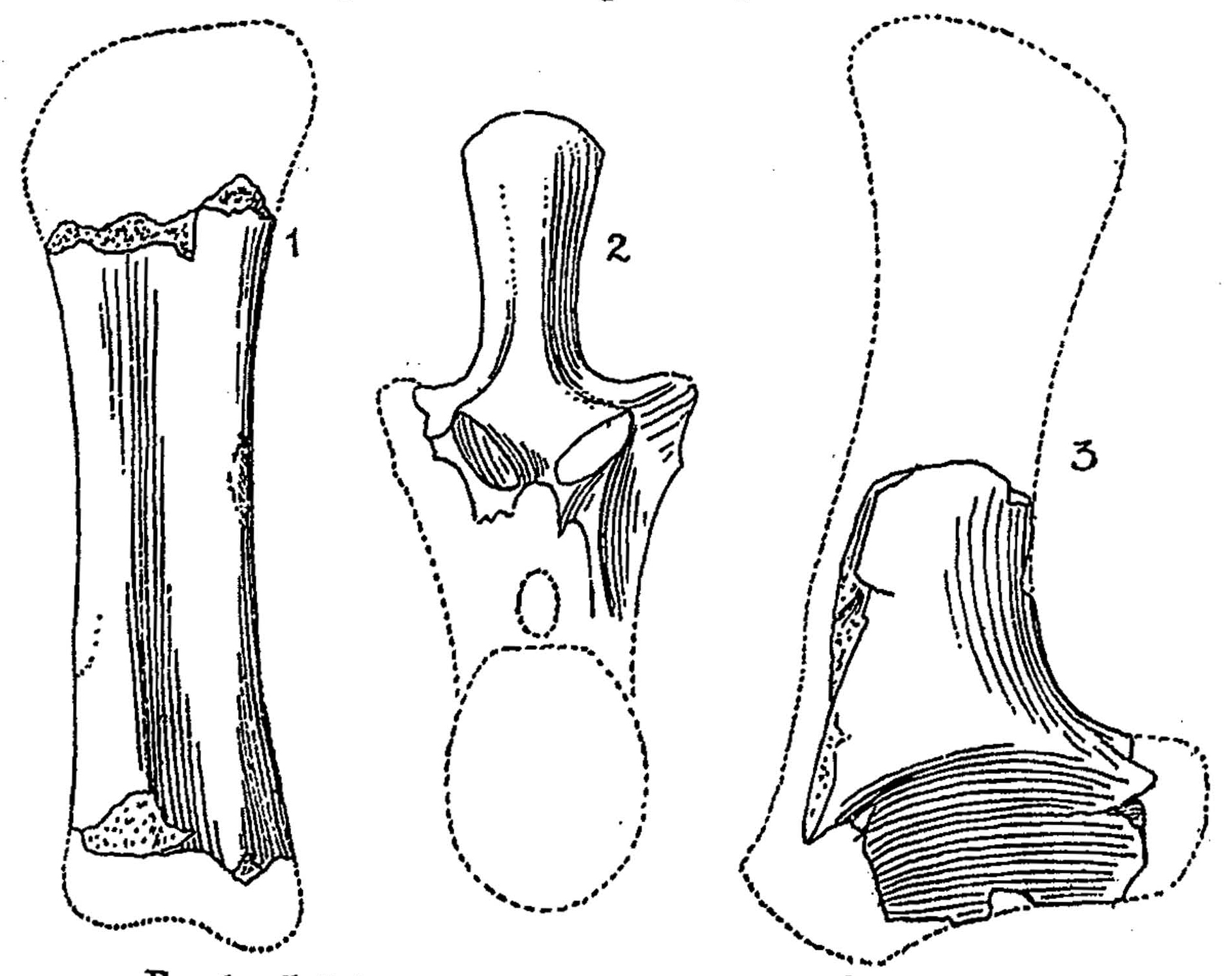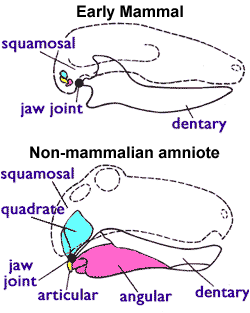|
Glanosuchus
''Glanosuchus'' is a genus of scylacosaurid therocephalian from the Late Permian of South Africa. The type species ''G. macrops'' was named by Robert Broom in 1904. ''Glanosuchus'' had a middle ear structure that was intermediate between that of early therapsids and mammals. Ridges in the nasal cavity of ''Glanosuchus'' suggest it had an at least partially endothermic metabolism similar to modern mammals. Description ''Glanosuchus macrops'' was first described in 1904 by South African paleontologist Robert Broom, who named the genus and species on the basis of a nearly complete holotype skull. The skull has been distorted during fossilization and the bone is indistinguishable from the surrounding matrix in some parts. In illustrating the holotype, Broom chose to reconstruct the skull of the species rather than draw the actual specimen. The skull of ''Glanosuchus'' is about long. ''Glanosuchus'' probably grew to around in length. Like other early therocephalians, ''Glanosuchus' ... [...More Info...] [...Related Items...] OR: [Wikipedia] [Google] [Baidu] |
1904 In Paleontology
Dinosaurs Newly named dinosaurs Data courtesy of George Olshevsky's dinosaur genera list. Plesiosaurs * Plesiosaur gastroliths documented.Brown (1904). Williston (1904). Sanders, Manley, and Carpenter (2001), "Table 12.1" page 167. Synapsids Non-mammalian Metatherians Eutherians Cetaceans Even-toed Ungulates References {{reflist * Brown, B. (1904) Stomach stones and food of plesiosaurs, Science, n.s. 20, (501): 184-185 * Sanders F, Manley K, Carpenter K. Gastroliths from the Lower Cretaceous sauropod Cedarosaurus weiskopfae. In: Tanke D.H, Carpenter K, editors. Mesozoic vertebrate life: new research inspired by the paleontology of Philip J. Currie. Indiana University Press; Bloomington, IN: 2001. pp. 166–180. * Williston, Samuel Wendel; 1904; The stomach stones of the plesiosaurs; Science; 20 pp. 565; American Association for the Advancement of Science ... [...More Info...] [...Related Items...] OR: [Wikipedia] [Google] [Baidu] |
Therocephalia
Therocephalia is an extinct suborder of eutheriodont therapsids (mammals and their close relatives) from the Permian and Triassic. The therocephalians ("beast-heads") are named after their large skulls, which, along with the structure of their teeth, suggest that they were carnivores. Like other non-mammalian synapsids, therocephalians were once described as "mammal-like reptiles". Therocephalia is the group most closely related to the cynodonts, which gave rise to the mammals. This relationship takes evidence in a variety of skeletal features. The fossils of therocephalians are numerous in the Karoo of South Africa, but have also been found in Russia, China, Tanzania, Zambia, and Antarctica. Early therocephalian fossils discovered in Middle Permian deposits of South Africa support a Gondwanan origin for the group, which seems to have spread quickly across Earth. Although almost every therocephalian lineage ended during the great Permian–Triassic extinction event, a few represe ... [...More Info...] [...Related Items...] OR: [Wikipedia] [Google] [Baidu] |
Nasal Concha
In anatomy, a nasal concha (), plural conchae (), also called a nasal turbinate or turbinal, is a long, narrow, curled shelf of bone that protrudes into the breathing passage of the nose in humans and various animals. The conchae are shaped like an elongated seashell, which gave them their name (Latin ''concha'' from Greek ''κόγχη''). A concha is any of the scrolled spongy bones of the nasal passages in vertebrates.''Anatomy of the Human Body'' Gray, Henry (1918) The Nasal Cavity. In humans, the conchae divide the nasal airway into four groove-like air passages, and are responsible for forcing inhaled air to flow in a steady, regular pattern around the largest possible of |
Scylacosauridae
Scylacosauridae is an extinct family of therocephalian therapsids. Scylacosaurids lived during the Permian period and were among the most basal therocephalians. The family was named by South African paleontologist Robert Broom in 1903. Scylacosaurids have long snouts and unusual saber-like canine teeth. References External links Scylacosauridaein the Paleobiology Database The Paleobiology Database is an online resource for information on the distribution and classification of fossil animals, plants, and microorganisms. History The Paleobiology Database (PBDB) originated in the NCEAS-funded Phanerozoic Marine Pale ... Guadalupian first appearances Lopingian extinctions Prehistoric therapsid families {{paleo-Therapsid-stub ... [...More Info...] [...Related Items...] OR: [Wikipedia] [Google] [Baidu] |
Late Permian
Late may refer to: * LATE, an acronym which could stand for: ** Limbic-predominant age-related TDP-43 encephalopathy, a proposed form of dementia ** Local-authority trading enterprise, a New Zealand business law ** Local average treatment effect, a concept in econometrics Music * Late (album), ''Late'' (album), a 2000 album by The 77s * Late!, a pseudonym used by Dave Grohl on his ''Pocketwatch (album), Pocketwatch'' album * Late (rapper), an underground rapper from Wolverhampton * Late (song), "Late" (song), a song by Blue Angel * "Late", a song by Kanye West from ''Late Registration'' Other * Late (Tonga), an uninhabited volcanic island southwest of Vavau in the kingdom of Tonga * Late (The Handmaid's Tale), "Late" (''The Handmaid's Tale''), a television episode * LaTe, Laivateollisuus, Oy Laivateollisuus Ab, a defunct shipbuilding company * Late may refer to a person who is Dead See also * * * ''Lates'', a genus of fish in the lates perch family * Later (other) ... [...More Info...] [...Related Items...] OR: [Wikipedia] [Google] [Baidu] |
Impedance Matching
In electronics, impedance matching is the practice of designing or adjusting the input impedance or output impedance of an electrical device for a desired value. Often, the desired value is selected to maximize power transfer or minimize signal reflection. For example, impedance matching typically is used to improve power transfer from a radio transmitter via the interconnecting transmission line to the antenna. Signals on a transmission line will be transmitted without reflections if the transmission line is terminated with a matching impedance. Techniques of impedance matching include transformers, adjustable networks of lumped resistance, capacitance and inductance, or properly proportioned transmission lines. Practical impedance-matching devices will generally provide best results over a specified frequency band. The concept of impedance matching is widespread in electrical engineering, but is relevant in other applications in which a form of energy, not necessarily el ... [...More Info...] [...Related Items...] OR: [Wikipedia] [Google] [Baidu] |
Inner Ear
The inner ear (internal ear, auris interna) is the innermost part of the vertebrate ear. In vertebrates, the inner ear is mainly responsible for sound detection and balance. In mammals, it consists of the bony labyrinth, a hollow cavity in the temporal bone of the skull with a system of passages comprising two main functional parts: * The cochlea, dedicated to hearing; converting sound pressure patterns from the outer ear into electrochemical impulses which are passed on to the brain via the auditory nerve. * The vestibular system, dedicated to balance The inner ear is found in all vertebrates, with substantial variations in form and function. The inner ear is innervated by the eighth cranial nerve in all vertebrates. Structure The labyrinth can be divided by layer or by region. Bony and membranous labyrinths The bony labyrinth, or osseous labyrinth, is the network of passages with bony walls lined with periosteum. The three major parts of the bony labyrinth are the vestib ... [...More Info...] [...Related Items...] OR: [Wikipedia] [Google] [Baidu] |
Articular
The articular bone is part of the lower jaw of most vertebrates, including most jawed fish, amphibians, birds and various kinds of reptiles, as well as ancestral mammals. Anatomy In most vertebrates, the articular bone is connected to two other lower jaw bones, the suprangular and the angular. Developmentally, it originates from the embryonic mandibular cartilage. The most caudal portion of the mandibular cartilage ossifies to form the articular bone, while the remainder of the mandibular cartilage either remains cartilaginous or disappears. In snakes In snakes, the articular, surangular, and prearticular bones have fused to form the compound bone. The mandible is suspended from the quadrate bone and articulates at this compound bone. Function In amphibians and reptiles In most tetrapods, the articular bone forms the lower portion of the jaw joint. The upper jaw articulates at the quadrate bone. In mammals In mammals, the articular bone evolves to form the malle ... [...More Info...] [...Related Items...] OR: [Wikipedia] [Google] [Baidu] |
Quadrate Bone
The quadrate bone is a skull bone in most tetrapods, including amphibians, sauropsids (reptiles, birds), and early synapsids. In most tetrapods, the quadrate bone connects to the quadratojugal and squamosal bones in the skull, and forms upper part of the jaw joint. The lower jaw articulates at the articular bone, located at the rear end of the lower jaw. The quadrate bone forms the lower jaw articulation in all classes except mammals. Evolutionarily, it is derived from the hindmost part of the primitive cartilaginous upper jaw. Function in reptiles In certain extinct reptiles, the variation and stability of the morphology of the quadrate bone has helped paleontologists in the species-level taxonomy and identification of mosasaur squamates and spinosaurine dinosaurs. In some lizards and dinosaurs, the quadrate is articulated at both ends and movable. In snakes, the quadrate bone has become elongated and very mobile, and contributes greatly to their ability to swallow very ... [...More Info...] [...Related Items...] OR: [Wikipedia] [Google] [Baidu] |
Anular Ligament Of Stapes
The annular stapedial ligament (also called the stapediovestibular joint) is a ring of fibrous soft tissue that connects the base of the stapes to the oval window of the inner ear. Calcification and hardening of the annular ligament of the stapes (Otosclerosis) is a common cause of adult deafness Deafness has varying definitions in cultural and medical contexts. In medical contexts, the meaning of deafness is hearing loss that precludes a person from understanding spoken language, an audiological condition. In this context it is written .... Ear Ligaments {{ligament-stub ... [...More Info...] [...Related Items...] OR: [Wikipedia] [Google] [Baidu] |
Ectotherm
An ectotherm (from the Greek () "outside" and () "heat") is an organism in which internal physiological sources of heat are of relatively small or of quite negligible importance in controlling body temperature.Davenport, John. Animal Life at Low Temperature. Publisher: Springer 1991. Such organisms (for example frogs) rely on environmental heat sources, which permit them to operate at very economical metabolic rates. Some of these animals live in environments where temperatures are practically constant, as is typical of regions of the abyssal ocean and hence can be regarded as homeothermic ectotherms. In contrast, in places where temperature varies so widely as to limit the physiological activities of other kinds of ectotherms, many species habitually seek out external sources of heat or shelter from heat; for example, many reptiles regulate their body temperature by basking in the sun, or seeking shade when necessary in addition to a whole host of other behavioral thermo ... [...More Info...] [...Related Items...] OR: [Wikipedia] [Google] [Baidu] |







.jpg)